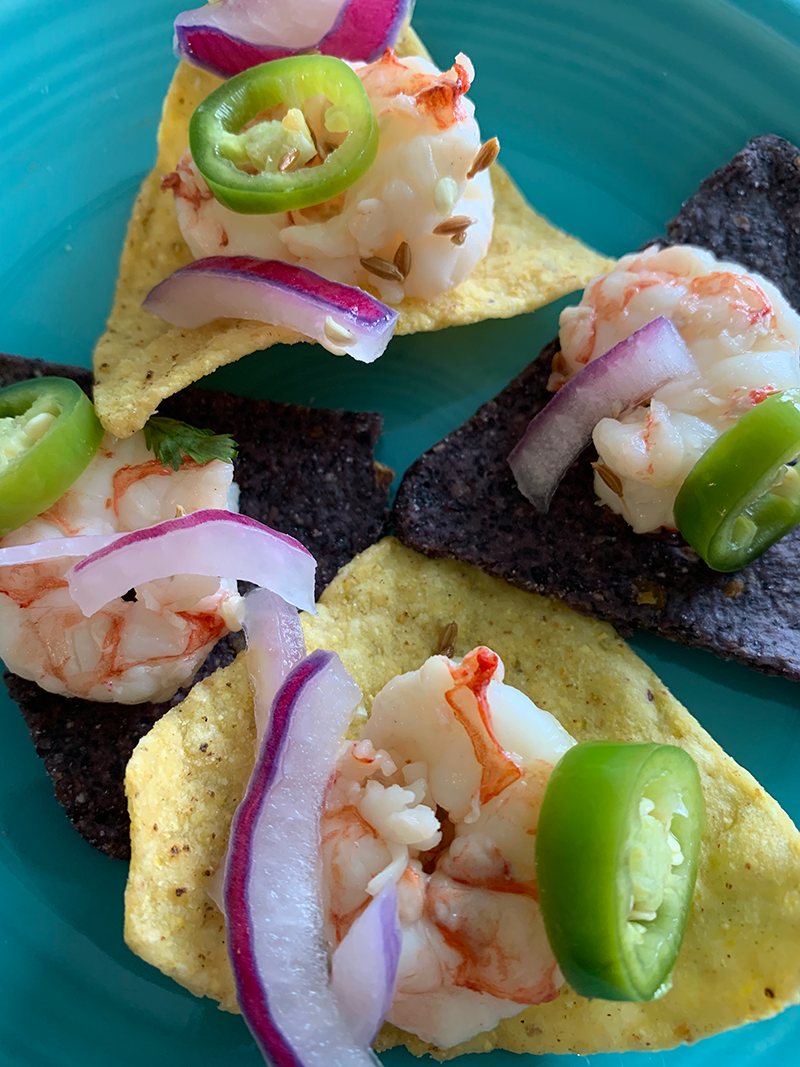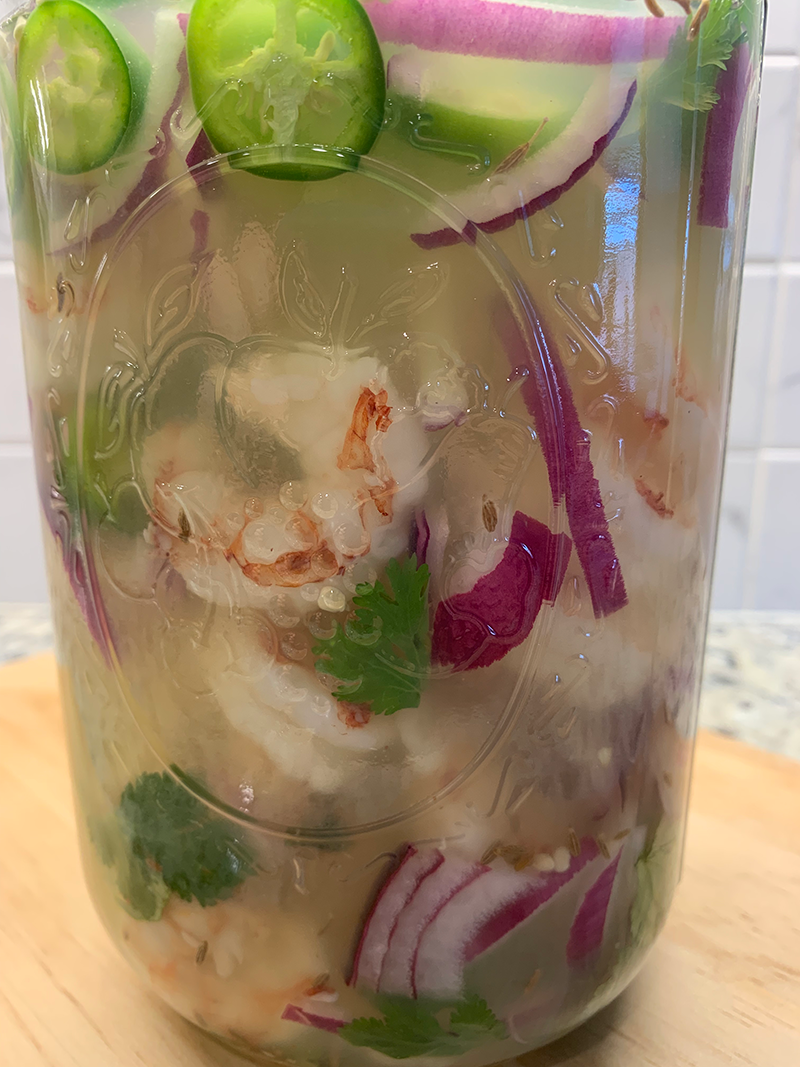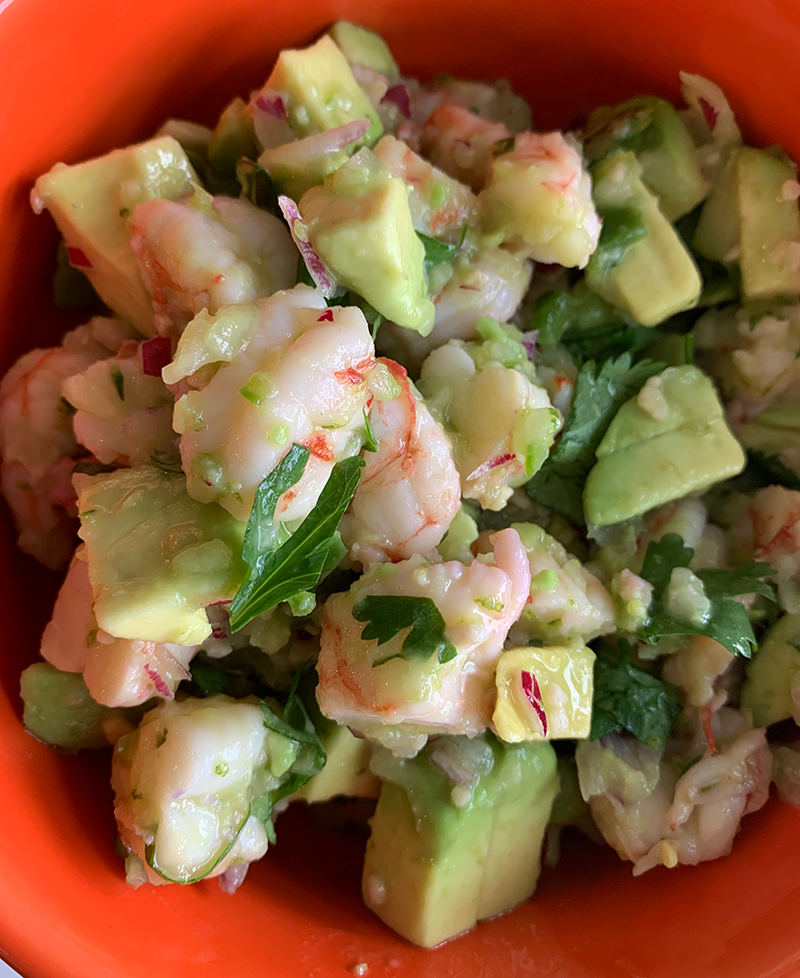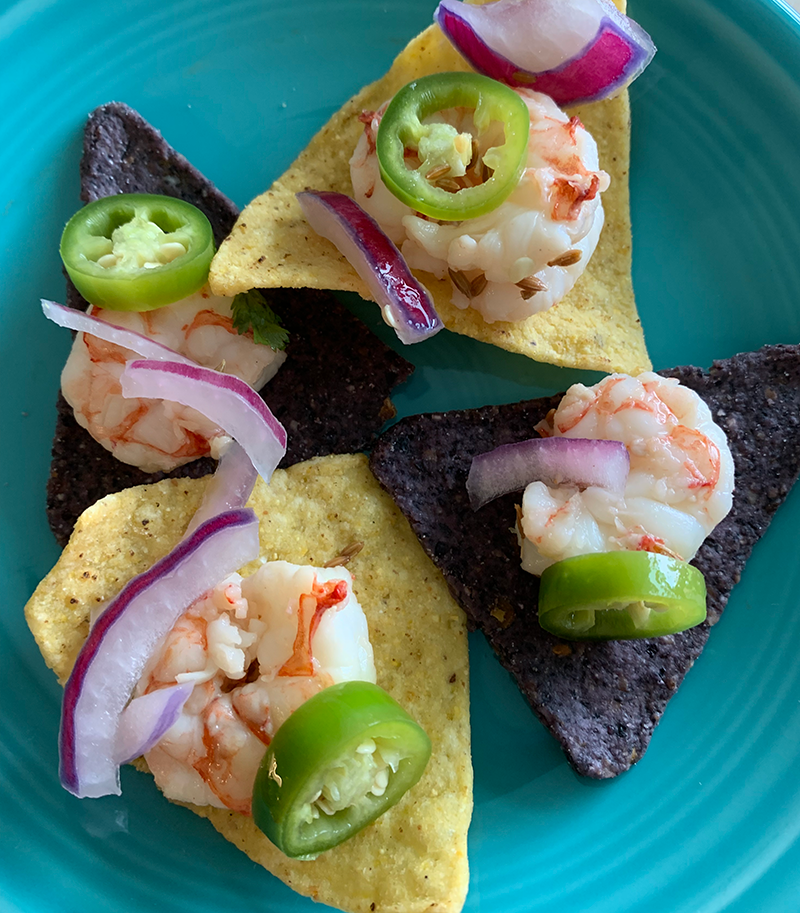
I’ve shared before about my love of Gulf Coast seafood before, here’s a snippet from a post about Texas Shrimp Boils –
My parents both grew up along the Gulf Coast of Texas, in or near a little community by the name of Bay City. My maternal grandfather had a beach house very close to the mouth of the Colorado River where it empties into the Gulf, a rustic wood-framed cabin on the tiny spit of land there between East and West Matagorda Bays.
The Camp as it was called by everyone in the family save for my grandfather, who had christened it the Mason Rouge (it was painted a nifty barn red), was a key focal point for summers of my youth as we travelled down to fish, crab, laze in the blistering coastal Texas summer heat, comb the beaches, and just generally live the life of a miniature pirate back in the 60s.
The camp was wiped out time and time again by a number of hurricanes, most notably by Carla, and each time Pa-Pa (paw paw) would rebuild it a little bit bigger.
Fresh seafood was the order of the day; we pulled crabs from the crab trap every few days, caught fish morning, afternoon, and night, and bought “table” shrimp from the little bay shrimper (his boat was Little Bob) whose ramshackle operation sprawled on the riverbank about half a city block away. We probably had to drive the furthest – about 10 minutes – to pick up a bushel of oysters dredged that morning when the oyster mood struck.
Some of my earliest memories of wanting to learn about the art and mystery of cooking came from standing at my grandmother Ma-Ma’s (maw maw) elbow as she created another masterpiece on the ancient (and dammit, I mean ancient) gas stove in the corner of the first floor “kitchen” at the Camp.
She was a masterful Southern cook, using something akin to alchemy to transform uber-fresh, simple ingredients into some of the best food I’ve ever tasted. Of course, those memories are buffered by time and the myopic, simplistic perspective of youth, but damn, her fish cakes, gumbo, fish, and shrimp were stunningly good.
Though I didn’t appreciate as I should back then, it was she who taught me to relish the tasty simplicity of a perfectly boiled shrimp, most often back in the day pulled from the pot, iced down to cool quickly, and eaten in a simple shrimp salad or dipped into just-crafted cocktail sauce bursting with nasal-clearing horseradish and savory Worcestershire (the Cajun influence in that part of coastal Texas was welcome!)…

I don’t recall Ma-Ma stirring up pickled shrimp, but they were on the menu of several of the hole in the wall seafood restaurants in Matagorda back in the day, typically as an escabeche-influenced appetizer, and I remember the mouth puckering acidity of the shrimp and bursts of spice from the onions and peppers after stealing a bit from the communal plate.
We hadn’t pickled shrimp in years around our camp until a few months ago when I stirred up a batch for next week’s Pickled Shrimp Ceviche (holy cow is that a great recipe); we feel like we’ve stumbled across an old friend in this recipe, and it’s found a spot in the summer rotation already.
Two key points for this recipe: One, There are dozens of ways to season boiled shrimp in the pot; here’s our routine, but feel free to use whatever recipe your Ma-Ma (or whoever else) taught you. And two, as you research various pickled shrimp recipes available today, you’ll see that folks use a host of various vinegars and citrus to pickle the shrimp. By all means experiment on your own to see what you like the best – we like this combination for its burst of acidity and the pineapple adds a subtle, interesting twist.
1 and 1/2 pounds raw medium shrimp, shelled, deveined
Your favorite shrimp boil spices
1/2 cup brown rice vinegar or apple cider vinegar
1/2 cup fresh lime juice
1/2 cup pineapple juice
1/2 medium red onion, cut into thin slices
1/3 cup chopped cilantro
1-2 jalapeño or serrano chiles, stemmed, seeded, cut in thin slices
1-2 cloves garlic, crushed
3/4 tsp cumin seeds
1/2 tsp or more good salt
Rinse the shrimp, and bring a large pot of water to a boil (2 quarts should be fine for this amount of shrimp); season as per your routine (see note above). We follow the routine detailed here for our shrimp boils.
Now add the shrimp and the remainder of ingredients to a large jar or BPA-free food storage bag, shaking or turning to evenly distribute all the goodies. The shrimp must be covered by the liquid in the jar; if not, add a bit of water or more vinegar to cover.
Into the fridge it goes for at least 24 hours to soak up all those great flavors; give it a shake or stir occasionally as well.
Enjoy, and these shrimp are amazing in the pickled shrimp ceviche (next image below) coming next week.




